Anna Dumitriu undertook an intensive artists residency in the Liu Lab for Synthetic Evolution at the University of California Irvine. The final outcomes were showcased in WETWARE: art | agency | animation at the Beall Center for Art and Technology, curated by Jens Hauser and David Familian. The exhibition opened on 6th February 2016 and ran until 7th May 2016.
Co-curator Jens Hauser has also wrote about the exhibition and artworks for Copenhagen University Post (Denmark) A New Alchemy – Biotechnology as Art.
List of Works
Engineered Antibody
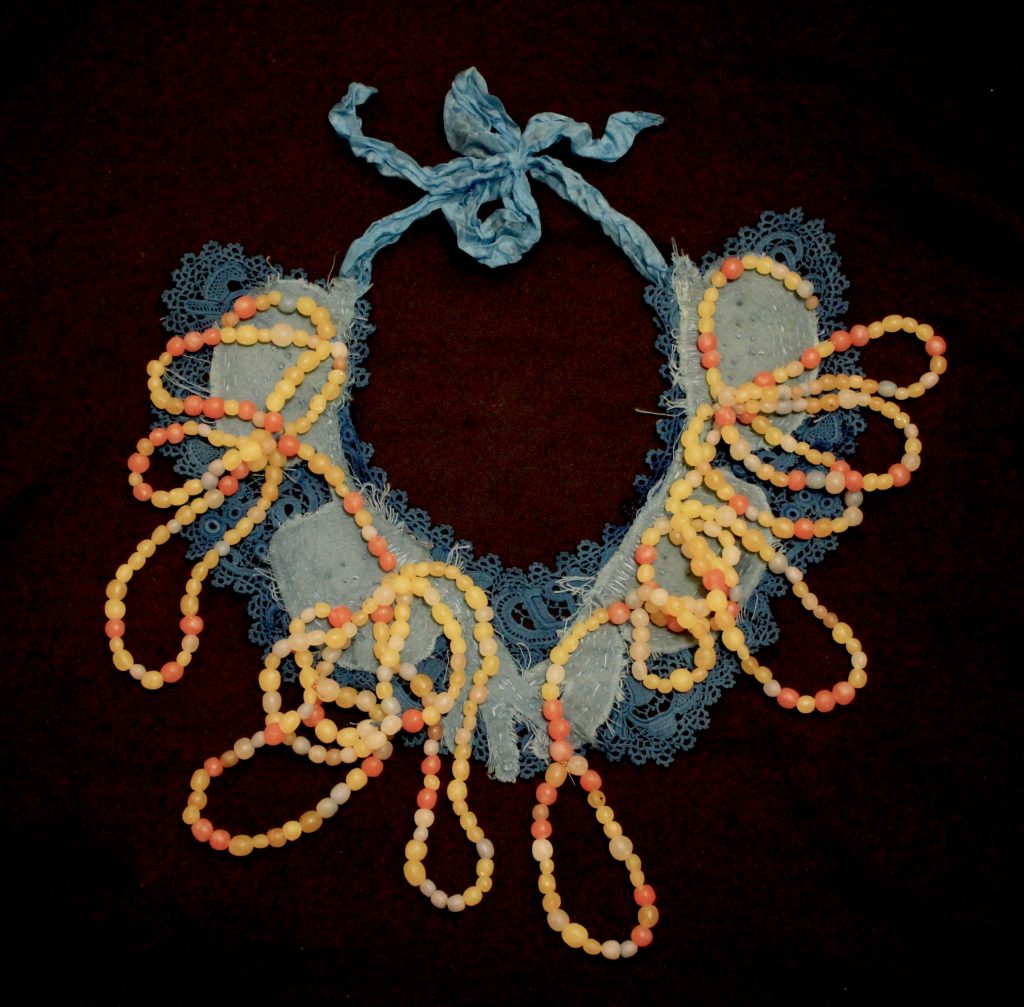
“Engineered Antibody” (2016) is a beaded necklace based on lab member Xiang Li’s research working with an antibody purified from the blood of an HIV positive patient. Made up of 452 hand-made beads, it both represents and physically contains the actual 21 amino acids of the antibody in the precise order. The light chain and heavy chain of the protein structure have been folded into the exact structure of the antibody. An antibody is a protein that is produced by the immune system in order to combat foreign bodies and viruses, which in this case can bind to HIV. Xiang Li is working to improve this antibody by engineering it to better block HIV infections through the introduction of an additional amino acid called sulfotyrosine.” (Mick Lorusso & Jens Hauser)
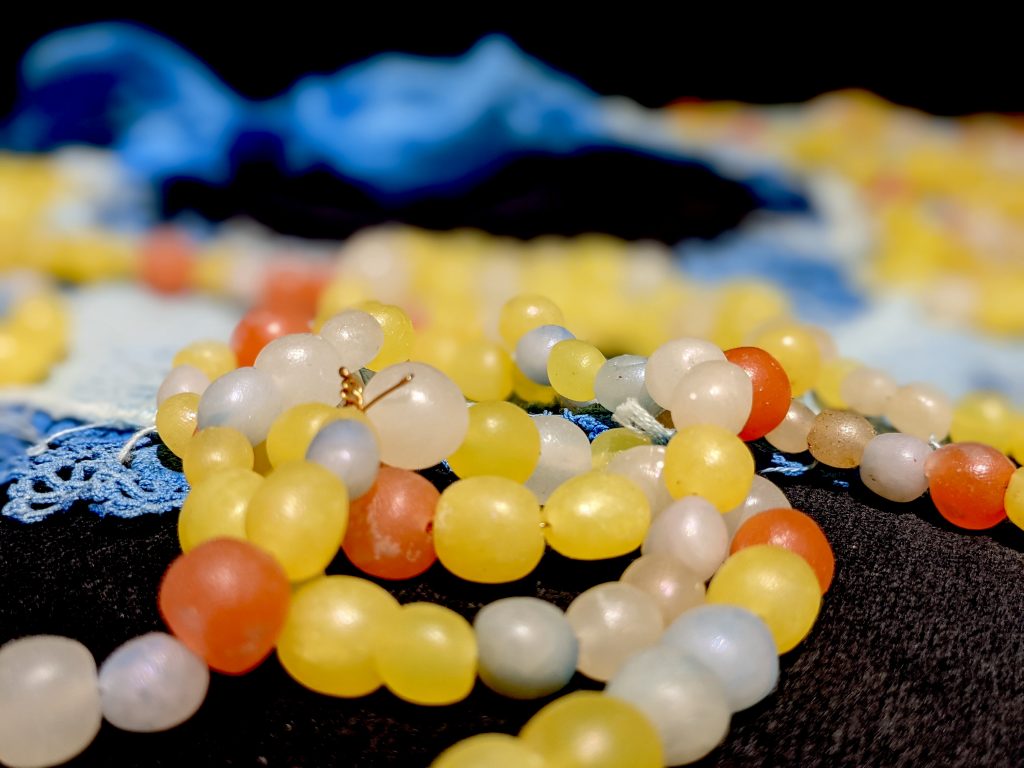
“The artist draws on the image that all forms of organic life are made of amino acids, which join together like strings of beads to form proteins that fold into three-dimensional structures essential to their function. The beads are then attached to textiles that have been dyed using Coomassie Brilliant Blue – originally a wool dye which is nowadays used as a stain in laboratories to visualize and separate proteins. The form of the embroidered calico is based on the diagram of the antibody structure.” (Mick Lorusso & Jens Hauser)
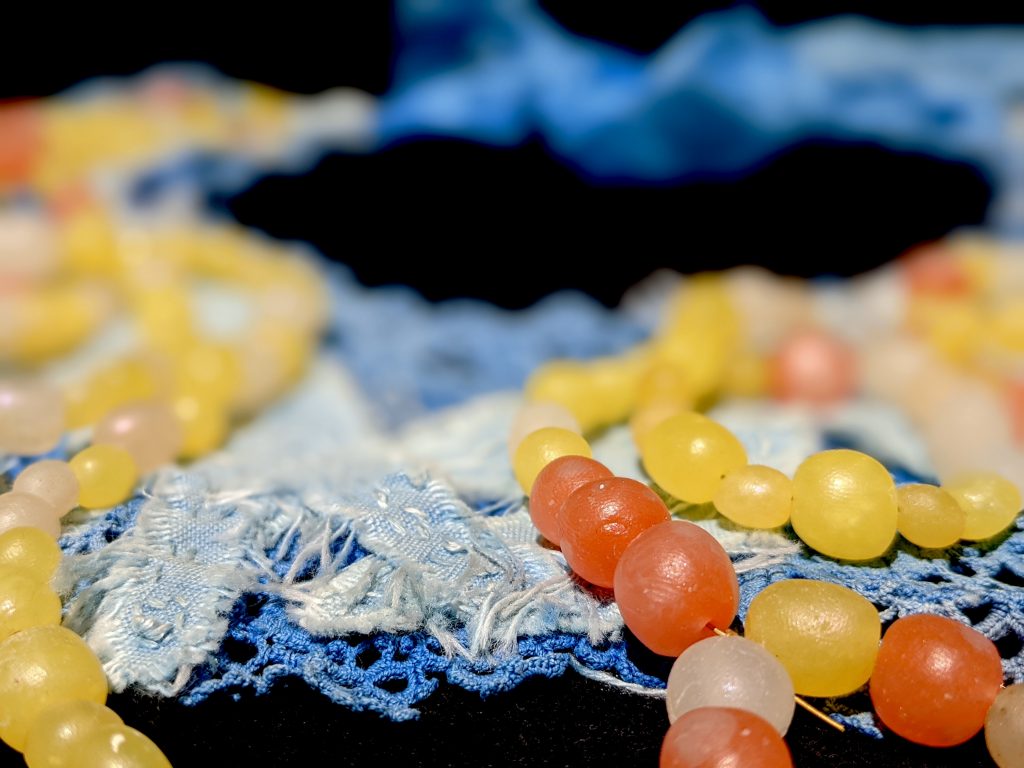
The process of making the work was fascinating because of the way the piece evolved as the artist tried to understand what she physically needed to do to make the work, and as the explanations became more and more complex and she questioned things that are generally just accepted. Beyond developing the artwork the process of working with Anna caused the scientists to reflect on their own work and Xiang Li commented: “Working with Anna on the antibody necklace piece actually made me realise that I had an error in the sequence of my antibody that I am using in my research project. [To build the work] we had to compare my antibody sequence to the correct antibody sequence in a crystal structure, and I noticed that those sequences did not match. Since then, I have fixed the sequence of my antibody for my research project!”. (Xiang Li)
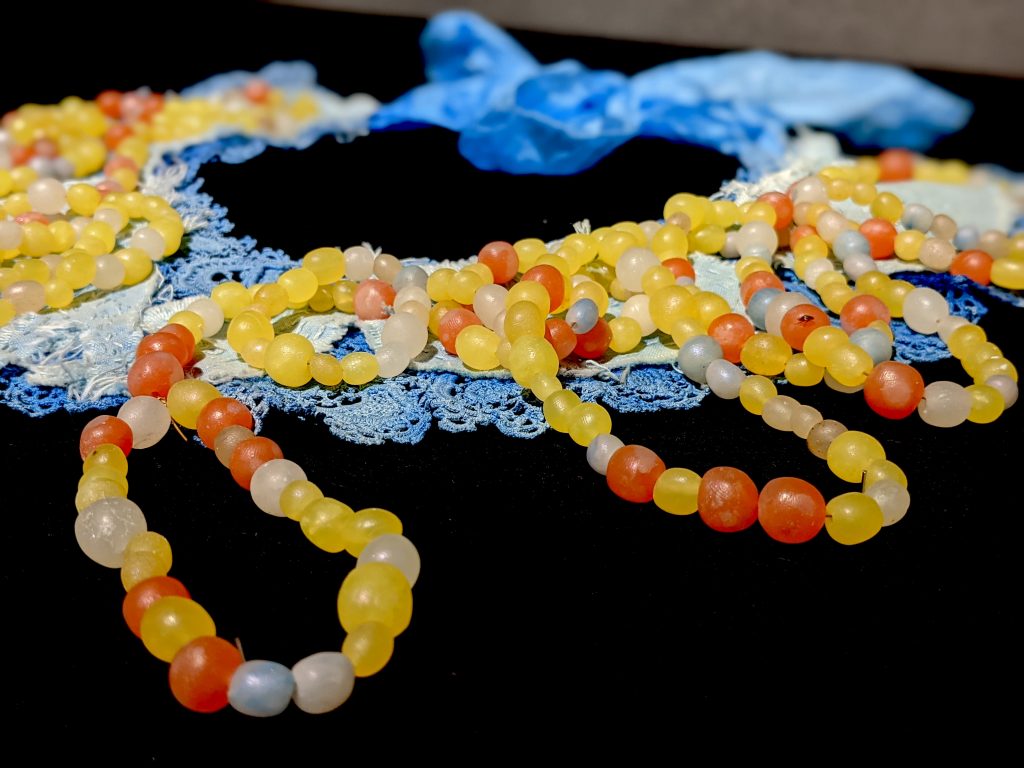
Necklace
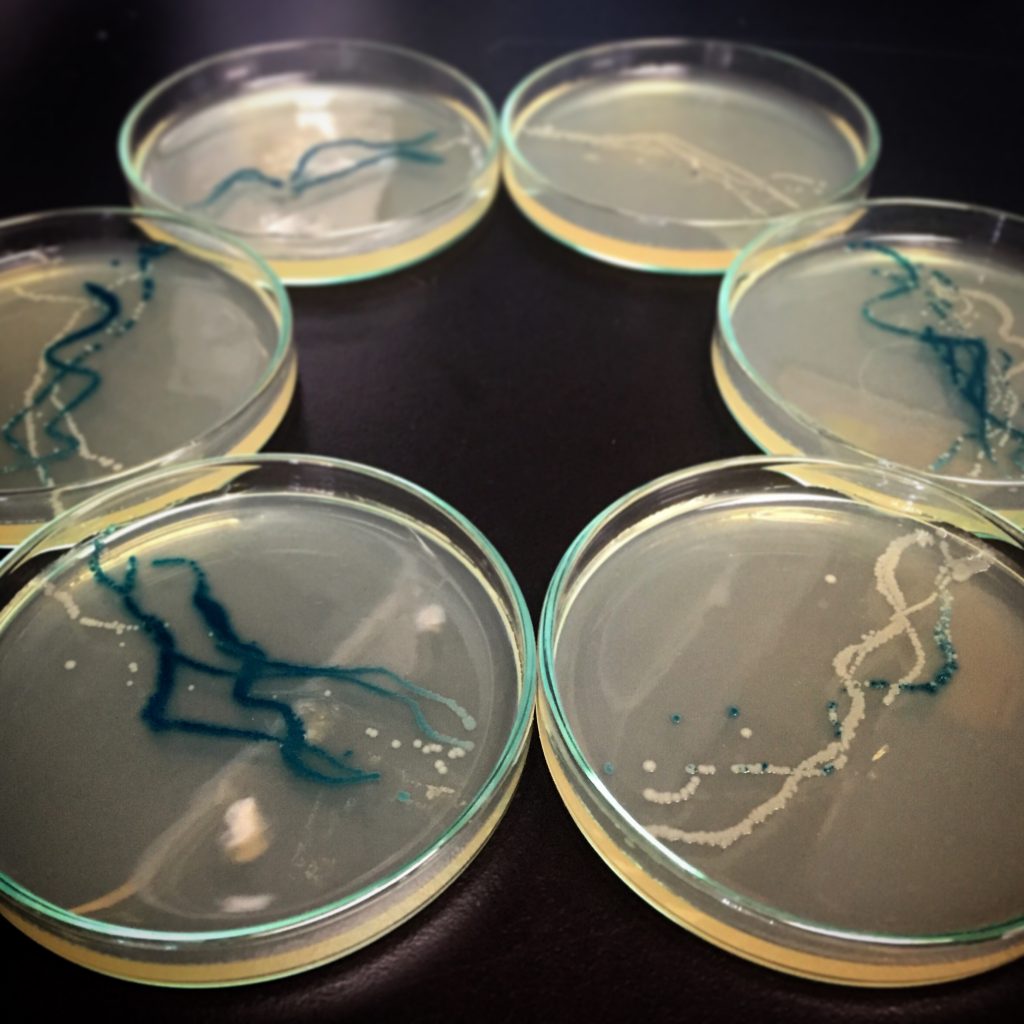
“In Necklace (2016), the artist plays with the ‘string of beads’ metaphor used by scientists to describe the structures of proteins constructed from chains of amino acids, but relocates the metaphor materially within the actual genomic level. Here, the ‘beads’ forming the ring shaped genome of a plasmid containing an engineered antibody have been edited using targeted synthetic biology techniques to introduce a random amino acid ‘bead’ in the variable region of the antibody. This process is equivalent to what occurs during the natural immune maturation process of antibodies in B lymphocytes (white bloods cells) during an adaptive immune response. B cells undergo genome editing, combinatorial exon selection of variable/joining regions, and class switching to modify and tune the antigen recognition site and overall antibody functional properties. Bacterial colonies have been grown in the form of a necklace on chromogenic XGAL plates containing a plasmid vector for the E51 Light Chain Fab Antibody ± single codon mutations at position L68. Each colony contains a fragment of the chain with a random amino acid at this position. Colonies will be blue or white dependent on compatibility of the fragment insertion into the lacZ selection marker. Necklace has been made in collaboration with Felix Grun, Center for Complex Biological Systems at UCI.” (Mick Lorusso & Jens Hauser).
Faster Mutation
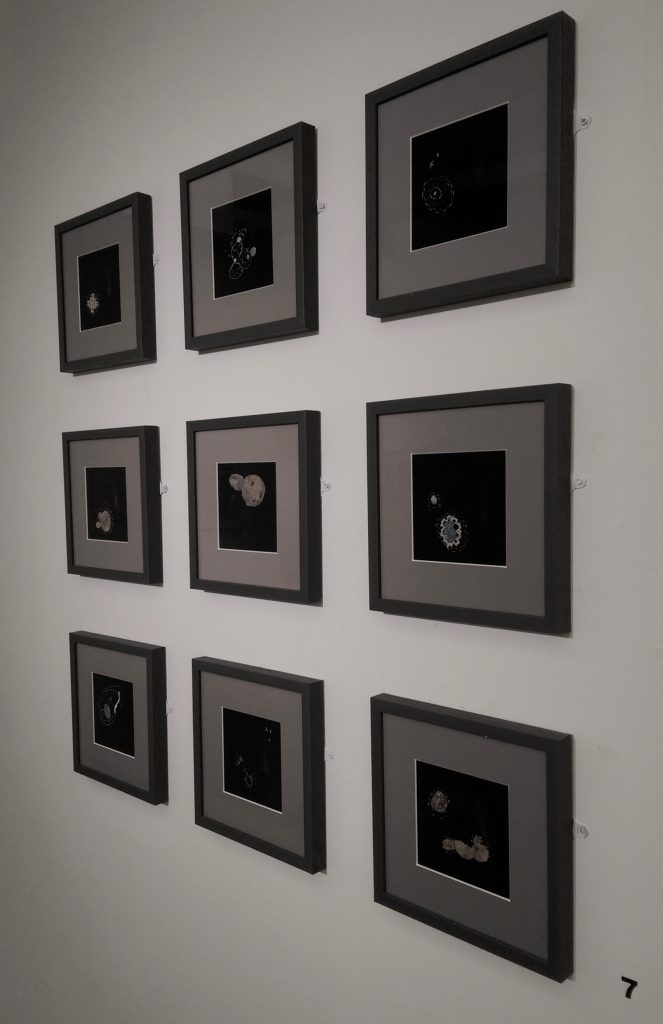
“For Faster Mutation (2016), the artist has manufactured embroidered works on velvet impregnated with yeasts that contain an enzyme derived from a bacteriophage that is undergoing increased mutation. Such velvet squares are used in the lab in a process called ‘replica plating’ which allows for producing an exact copy from one agar plate to another. While the medium of black velvet is considered to belong to the domain of amateur artists, the embroideries here also reference the appearance ecclesiastic embroideries and metaphorically hint at public suspicion that synthetic biology is ‘playing god.'” (Mick Lorusso & Jens Hauser)
Talks
LASER symposium at University of California Los Angeles (UCLA) on 4th February 2016 with scientific collaborator Pratik Shah/
Gene Editing, Artificial Life and Ethics: An Interdisciplinary Symposium at the Newkirk Center for Science and Society at University of California Irvine.
Reviews and Publications
The Project has been written about and featured extensively across a number of international publications.
“Engineered Antibody” was featured in Berlin Art Link Online Contemporary Art Magazine (Germany) in the article “Inter-Connectivity: ‘Under the Viral Shadow’ at Art Laboratory Berlin” by Alison Sperling, August 2021
“Engineered Antibody” by Anna Dumitriu was pictured in Artforum International Magazine (USA) in the article “Baroque Technopatriarchy” by Paul B. Preciado, January 2018
Article about the Wetware exhibition “Art and Agency in Times of Wetware” published in French and English by Jens Hauser in Stream 4 magazine (France), November 2017
Article by Anna Dumitriu “Trust Me, I’m an Artist: Building Opportunities for Art & Science Collaboration through an Understanding of Ethics” for Leonardo Journal, published on just accepted page, hosted by MIT Press doi: 10.1162/LEON_a_01481, (USA), on 20 June 2017
Article by Jens Hauser (co-curator WETWARE) for Copenhagen University Post (Denmark) “A New Alchemy – Biotechnology as Art”, February 2016
Exhibitions
Under the Viral Shadow: Networks in the Age of Technoscience and Infection opened at Art Laboratory Berlin (Germany) from 27th August until 10th October 2021.
WETWARE: art | agency | animation at the Beall Center for Art and Technology, curated by Jens Hauser and David Familian, from 6th February 2016 until 7th May 2016.
“Engineered Antibody” and “Faster Mutation” were exhibited at the Blyth Gallery at Imperial College London from 22nd March – 7th May 2017 as part of Dumitriu’s solo exhibition “Microbe Stories“.
“BioArt and Bacteria” (solo exhibition) at Oxford Museum of the History of Science from 28th September 2017 until 18th March 2018.
“BioArt and Bacteria” (solo exhibition) at The Esther Klein Gallery and the Science Center in Philadelphia, USA. The show ran from 18th October until the 24th November 2018.
“BioArt and Bacteria” (solo exhibition) at Eden Project in Cornwall, UK from 30th March – 1st June 2019.
“Engineered Antibody” (curated group exhibition) “All in This Together” online at the DISTANCE GALLERY, 15th May – 15th June 2020.
“Engineered Antibody” (curated group exhibition) “Under the Viral Shadow” at Art Laboratory Berlin, 28th August – 10th October 2021.
BioArt Knowledge: A Solo Exhibition by Anna Dumitriu at the Yarrow Gallery in Oundle, Near Peterborough, UK, from 9th November – 6th December 2023.
